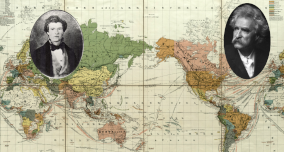Coolgardie is a small town in Western Australia, 558 kilometres (347 mi) east of the state capital, Perth. It has a population of approximately 1000 people.
Although Coolgardie is now known to most Western Australians as a tourist town and a mining ghost town, it was once the third largest town in Western Australia (after Perth and Fremantle). At this time, mining of alluvial gold was a major industry and supplied the flagging economy with new hope. Many miners suffered under the harsh conditions, but for a few, their finds made the hard work worthwhile. Most men, however, left poorer than they had started off, with their hopes dashed.
The town was founded in 1892, when gold was discovered in the area. Australia had seen several major gold rushes over the previous three decades, mostly centred on the east coast, but these had mostly been exhausted by the 1890s. With the discovery of a new goldfield, an entire new gold rush began, with thousands flocking to the area. By 1898, Coolgardie was the third largest town in the colony, with an estimated population of 5,008 (3,151 men and 1,857 women). At its peak, 700 mining companies based in Coolgardie were registered with the London Stock Exchange. The town also supported a wide variety of businesses and services, including the railway connection between Perth and Kalgoorlie, a swimming pool (first public baths in the state), many hotels and several newspapers.
The value of Coolgardie to the colony in the late 1890s was so very significant that it was used as leverage to force Western Australia to join the Australian federation - Britain and the eastern colonies threatened to create a new state to be named Auralia around Coolgardie and other regional goldfields, such as Kalgoorlie, if the government in Perth did not agree to hold a referendum on federation. The Western Australian government reluctantly complied and a referendum was held just in time to become a founding state in the new federation. When federation did occur in 1901, Coolgardie was the centre of a federal electorate, the Division of Coolgardie. Soon after in November 1901, Alf Morgans from the state electorate of Coolgardie briefly became Premier of Western Australia. Albert Thomas, also of Coolgardie, was elected the first Member of Dundas, an electoral division south of Coolgardie.
However, the gold began to decrease in the early 1900s, and by World War I, the town was in serious decline. The federal electorate was abolished in 1913 due to the diminished population, as many of its residents left for other towns where the gold was still plentiful, and it soon ceased to be a municipality. The situation remained unchanged throughout the century, as its population slipped to around 200 and it became a virtual ghost town. An example of this decline is that, in March 1896, Coolgardie's main street was lit by an electric light, but by April 1924, the same street was lit by four hurricane lamps.
Despite this, many of the buildings from the town's peak were retained, which in recent years has helped start a small revival in the town's fortunes. The development of a tourist industry has once again created some employment in the town, resulting in a small increase in population. Coolgardie appears to be no longer in danger of dying.
